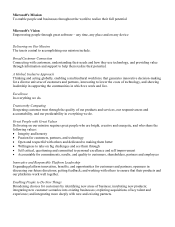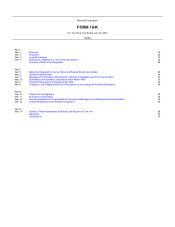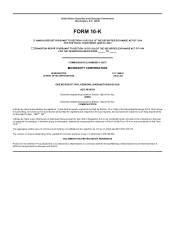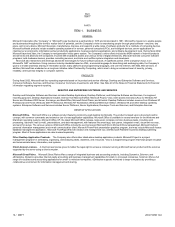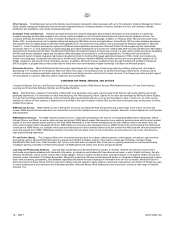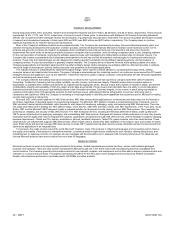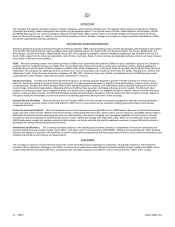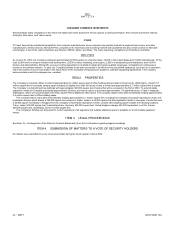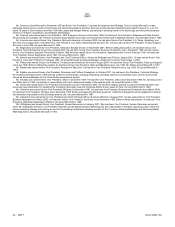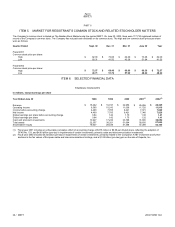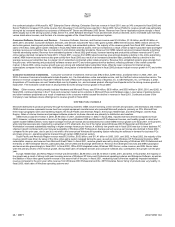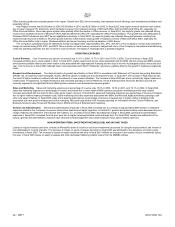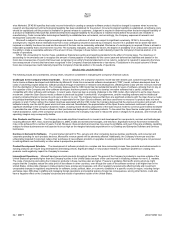Microsoft 2002 Annual Report Download - page 20
Download and view the complete annual report
Please find page 20 of the 2002 Microsoft annual report below. You can navigate through the pages in the report by either clicking on the pages listed below, or by using the keyword search tool below to find specific information within the annual report.
MSFT 22 / 2002 FORM 10-K
Part I
Item 1
COMPETITION
The software business is intensely competitive and subject to rapid technological change. As the company pursues its largest strategic initiative, Microsoft
.NET, the Company could experience more intense competition during the transition from the traditional core businesses to its new products based on the
.NET architecture. The Company continues to face movement from PC-based applications to server-based applications or Web-based application hosting
services, from proprietary software to open source software such as the Linux operating system, and from PCs to Internet-based devices. A number of
Microsoft’s most significant competitors, including IBM, Sun Microsystems, Oracle, and AOL-Time Warner, are collaborating with one another on various
initiatives directed at competing with Microsoft. These initiatives relate in part to efforts to move software from individual PCs to centrally managed servers,
which would present significant challenges to the Company’s historical business model. Other competitive collaborative efforts include the development of
new platform technologies that are intended to replicate much of the value of Microsoft Windows operating systems. New computing form factors, including
non-PC information devices, are gaining popularity and competing with PCs running Microsoft’s software products.
Microsoft faces formidable competition in these new areas and in all areas of its current business activities. The rapid pace of technological change,
particularly in the area of Internet platforms and services, continually creates new opportunities for existing competitors and start-ups and can quickly render
existing technologies less valuable. Global software piracy—the unlawful copying and distribution of Microsoft’s copyrighted software products—deprives the
Company of large amounts of revenue on an annual basis.
The Company’s competitive position may be adversely affected in the future by one or more of the factors described in this section, particularly in view of
the fast pace of technological change in the computing industry.
DESKTOP AND ENTERPRISE SOFTWARE AND SERVICES
The Company’s competitors include many software application vendors, such as IBM, Oracle, Apple, Sun Microsystems, Corel, Qualcomm, and local
application developers in Europe and Asia. IBM and Corel have large installed bases with their spreadsheet and word processor products, respectively, and
both have aggressive pricing strategies. Also, IBM and Apple preinstall certain of their application software products on various models of their PCs,
competing directly with Microsoft’s desktop application software. Sun Microsystems’ Star Office is aggressively priced. Additionally, Web-based application
hosting services provide an alternative to PC-based applications such as Microsoft Office.
Microsoft’s PC and server operating system products face substantial competition from a wide variety of companies. Competitors such as IBM, Apple
Computer, Sun Microsystems, and others are vertically integrated in both software development and hardware manufacturing and have developed operating
systems that they preinstall on their own computers. Many of these operating system software products are also licensed to third-party OEMs for
preinstallation on their computers. Microsoft’s operating system products compete with UNIX-based operating systems from a wide range of companies,
including IBM, Hewlett-Packard, Sun Microsystems, and others. Variants of UNIX run on a wide variety of computer platforms and have gained increasing
acceptance as desktop operating systems. The Linux open source operating system has gained increasing acceptance as well. Several computer
manufacturers preinstall Linux on PC servers and many leading software developers have written applications that run on Linux. Microsoft Windows
operating systems also face competition from alternative platforms such as those based on Internet browsing software and Java technology promoted by
AOL-Time Warner and Sun Microsystems.
The Company competes in the business of providing enterprise-wide computing solutions with several competitors who enjoy a larger share of sales and
larger installed bases. Many companies offer operating system software for mainframes and midrange computers, including IBM, HP, and Sun Microsystems.
Since legacy business systems are typically support-intensive, these competitors also offer substantial support services. Software developers that provide
competing server applications for PC-based distributed client/server environments include Oracle, IBM, Computer Associates, Sybase, and Informix. There
are also several software vendors who offer connectivity servers. As mentioned above, there are numerous companies and organizations that offer Internet
and intranet server software, which compete against the Company’s business systems. Additionally, IBM has a large installed base of Lotus Notes and
cc:Mail, both of which compete with the Company’s collaboration and e-mail products.
The Company’s developer products compete against offerings from BEA Systems, Borland, IBM, Macromedia, Oracle, Sun Microsystems, Sybase, and
other companies.
CONSUMER SOFTWARE, SERVICES, AND DEVICES
Microsoft’s online services network, MSN, faces formidable competition from AOL-Time Warner, Yahoo!, and a vast array of Web sites and portals that offer
content of all types and e-mail, instant messaging, calendaring, chat, and search and shopping services, among other things.
Xbox competes head-to-head against game systems from Nintendo and Sony, both of which have a large established base of game system users. Game
developers like Activision, Capcom, Electronic Arts, Sega, Tecmo, and THQ, to name a few, are both partners and competitors.
Microsoft faces many competitors in the mobile devices space, including Palm, Symbian, Nokia, and Openwave. The embedded operating system market
is highly fragmented with many competitive offerings. Key competitors include Wind River and versions of embeddable Linux from commercial Linux vendors
such as Red Hat, Lineo, and MontaVista.


